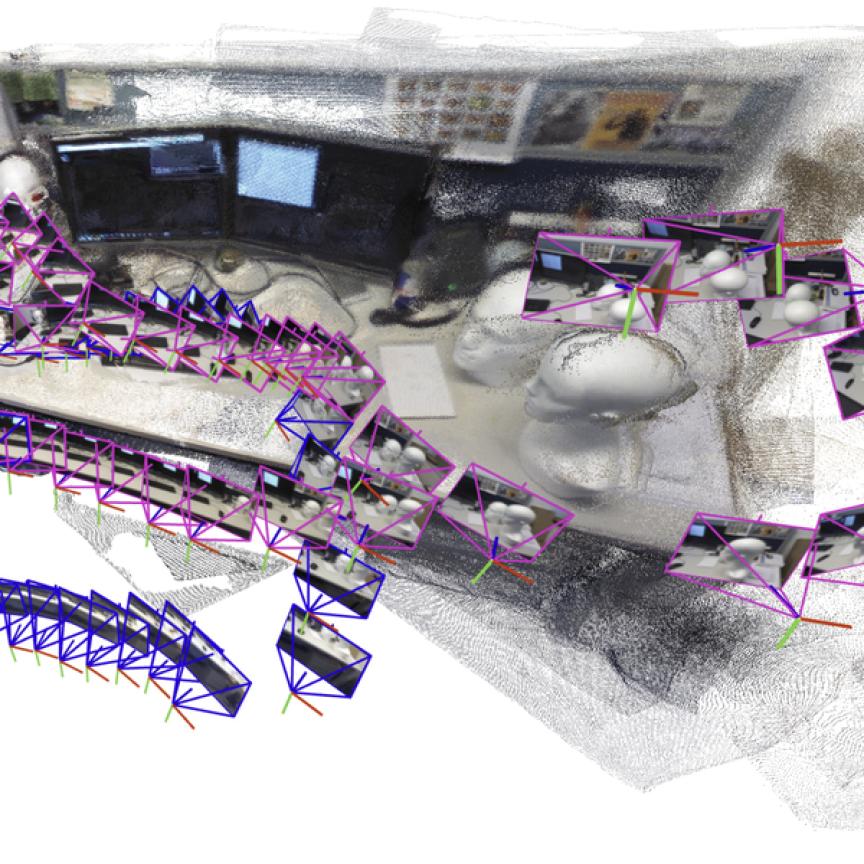For several years, Nerian Vision Technologies has successfully demonstrated the practicality of stereo vision in industrial environments with its SP1, SceneScan and SceneScan Pro stereo vision systems. With the Scarlet 3D depth camera, the young company presents what is currently the fastest stereo vision and 3D depth camera, with also one of the highest image resolutions available on the market. Nerian Vision thus remains a pioneer in the 3D machine vision sector.
Scarlet combines a 3D stereo camera and image processing system in one device. Whether for static environments, or hard and critical real-time applications in dynamic environments, the Scarlet 3D stereo camera delivers exactly the image and depth data needed for a wide range of machine vision applications. It is designed primarily for agricultural, bin picking, pick and place, autonomous driving and autonomous vehicle applications.
With up to 120 fps and over 70 million 3D points per second, Scarlet offers by far the fastest 3D measurement rate in machine vision. In addition, Scarlet achieves an excellent resolution of up to 5 megapixels in the camera and depth image. It thus beats the predecessor system by a factor of 2.5 in terms of frame rate. Furthermore, Scarlet can process twice as large a disparity range (512 pixels) as SceneScan Pro, resulting in a doubling of the depth resolution. As a result, even more precise 3D measurement results can be achieved.
As with Nerian's SceneScan stereo vision sensor, the image data is processed in real time using a powerful FPGA and its advanced stereo algorithm. The processing result is a sub-pixel accurate disparity map (an inverse depth image), which is transmitted via 1 or 10 Gigabit Ethernet to a computer or embedded system. Of course, the post-processing of the data also includes detection of erroneous disparities and noise reduction. Nerian's open-source and cross-platform API also converts this disparity map into a dense 3D point cloud.
All of this is made possible by the integration of a high-performance FPGA and the second generation Sony Pregius IMX250 image sensor, which has both a particularly high dynamic range (73 dB) and high quantum efficiency (67%), with a pixel size of 3.45 μm.
In addition, an extremely fast inertial sensor (IMU) has been integrated into Scarlet, which captures motion data at up to 400 Hz. Inertial data is particularly valuable for applications in mobile robotics, such as simultaneous localisation and mapping (SLAM). Scarlet eliminates the need for a separate IMU.
With an IP67 rating, the device is ideally suited for outdoor use or in dusty environments. Thanks to the chemically tempered glass window, the high-resolution optics remain protected even in very harsh environments. The additional automatic recalibration ensures the system's functionality even under mechanical stress and a long period of operation.
Scarlet is available in two versions. With a 10 cm baseline distance (distance between the image sensors) for measurements at close range, and with a 25 cm baseline distance for depth measurements at greater distances. With a flexible choice of lenses, from 5 - 25 mm focal length, Scarlet can be easily adapted to different field of view requirements from 19° - 80° horizontal FOV. Working distances are also configurable from as close as 0.14 m all the way into the distance by choosing the right camera model and lenses.
Thus, with the new product generation, Nerian Vision remains true to the promise that the products adapt to the corresponding application and not vice versa.
The Scarlet 3D depth camera will launch on February 1, 2021, initially with a monochrome camera sensor; the launch as a 3D depth camera with a color sensor is planned for mid-2021. For the particularly curious, there are also first real-time test images: https://youtu.be/nRmM-L7YShk.

